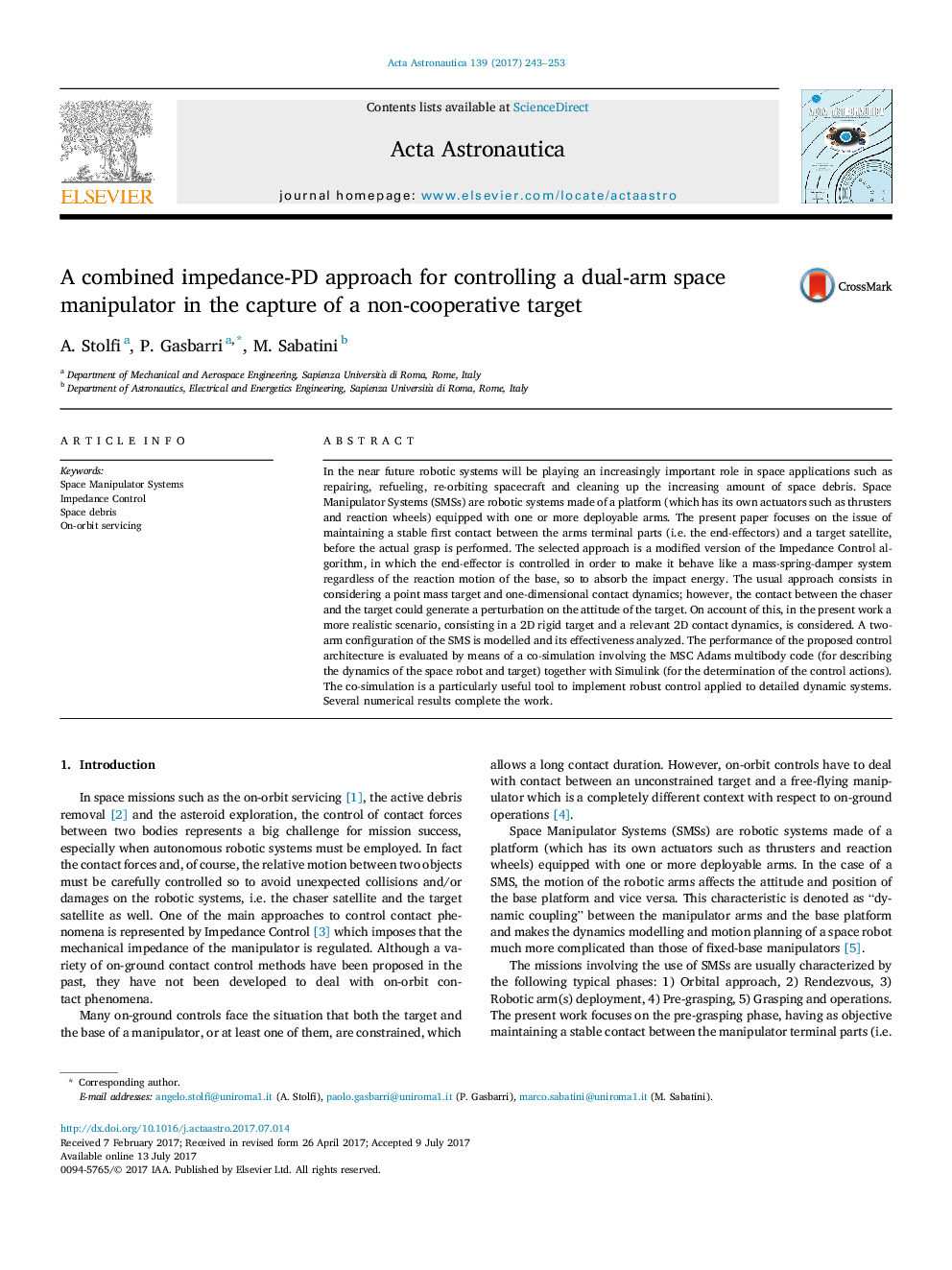| Article ID | Journal | Published Year | Pages | File Type |
|---|---|---|---|---|
| 5472267 | Acta Astronautica | 2017 | 11 Pages |
Abstract
In the near future robotic systems will be playing an increasingly important role in space applications such as repairing, refueling, re-orbiting spacecraft and cleaning up the increasing amount of space debris. Space Manipulator Systems (SMSs) are robotic systems made of a platform (which has its own actuators such as thrusters and reaction wheels) equipped with one or more deployable arms. The present paper focuses on the issue of maintaining a stable first contact between the arms terminal parts (i.e. the end-effectors) and a target satellite, before the actual grasp is performed. The selected approach is a modified version of the Impedance Control algorithm, in which the end-effector is controlled in order to make it behave like a mass-spring-damper system regardless of the reaction motion of the base, so to absorb the impact energy. The usual approach consists in considering a point mass target and one-dimensional contact dynamics; however, the contact between the chaser and the target could generate a perturbation on the attitude of the target. On account of this, in the present work a more realistic scenario, consisting in a 2D rigid target and a relevant 2D contact dynamics, is considered. A two-arm configuration of the SMS is modelled and its effectiveness analyzed. The performance of the proposed control architecture is evaluated by means of a co-simulation involving the MSC Adams multibody code (for describing the dynamics of the space robot and target) together with Simulink (for the determination of the control actions). The co-simulation is a particularly useful tool to implement robust control applied to detailed dynamic systems. Several numerical results complete the work.
Related Topics
Physical Sciences and Engineering
Engineering
Aerospace Engineering
Authors
A. Stolfi, P. Gasbarri, M. Sabatini,
